Ford Puma vs Kia Ceed Sportswagon – Which car suits you better?
Two cars, one duel: Ford Puma meets Kia Ceed Sportswagon.
Which one wins in performance, efficiency and value for money? Find out now!
Costs and Efficiency:
Price and efficiency are often the first things buyers look at. Here it becomes clear which model has the long-term edge – whether at the pump, the plug, or in purchase price.
Kia Ceed Sportswagon has a hardly perceptible advantage in terms of price – it starts at 24300 £, while the Ford Puma costs 24800 £. That’s a price difference of around 437 £.
Fuel consumption also shows a difference: Ford Puma manages with 5.40 L and is therefore a bit more efficient than the Kia Ceed Sportswagon with 6 L. The difference is about 0.60 L per 100 km.
Engine and Performance:
Power, torque and acceleration are the classic benchmarks for car enthusiasts – and here, some clear differences start to show.
When it comes to engine power, the Ford Puma has a to a small extent edge – offering 168 HP compared to 140 HP. That’s roughly 28 HP more horsepower.
In acceleration from 0 to 100 km/h, the Ford Puma is distinct quicker – completing the sprint in 7.40 s, while the Kia Ceed Sportswagon takes 9.70 s. That’s about 2.30 s faster.
In terms of top speed, the Ford Puma performs minimal better – reaching 210 km/h, while the Kia Ceed Sportswagon tops out at 197 km/h. The difference is around 13 km/h.
There’s also a difference in torque: Ford Puma pulls somewhat stronger with 290 Nm compared to 253 Nm. That’s about 37 Nm difference.
Space and Everyday Use:
Cabin size, boot volume and payload all play a role in everyday practicality. Here, comfort and flexibility make the difference.
Both vehicles offer seating for 5 people.
In curb weight, Ford Puma is slight lighter – 1316 kg compared to 1335 kg. The difference is around 19 kg.
In terms of boot space, the Kia Ceed Sportswagon offers slightly more room – 625 L compared to 523 L. That’s a difference of about 102 L.
In maximum load capacity, the Kia Ceed Sportswagon performs clearly perceptible better – up to 1694 L, which is about 411 L more than the Ford Puma.
When it comes to payload, Kia Ceed Sportswagon slight takes the win – 485 kg compared to 469 kg. That’s a difference of about 16 kg.
Who comes out on top?
Overall, the Kia Ceed Sportswagon shows itself to be slightly ahead and secures the title of DriveDuel Champion.
It convinces with the more balanced overall package and proves to be the more versatile choice for everyday use.
 @ Kia Corporation
@ Kia Corporation
Kia Ceed Sportswagon
Ford Puma
The Ford Puma is a cheeky compact crossover that blends sporty styling with city-friendly practicality, giving drivers a surprisingly fun and composed ride. With clever storage tricks and a lively personality, it’s a smart pick for buyers who want enjoyment without fuss.
details @ Ford Motor Company / Ford Media Center
@ Ford Motor Company / Ford Media Center
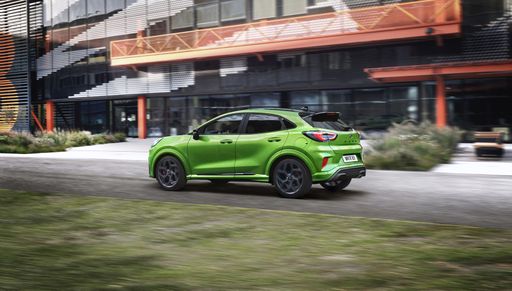 @ Ford Motor Company / Ford Media Center
@ Ford Motor Company / Ford Media Center
 @ Ford Motor Company / Ford Media Center
@ Ford Motor Company / Ford Media Center
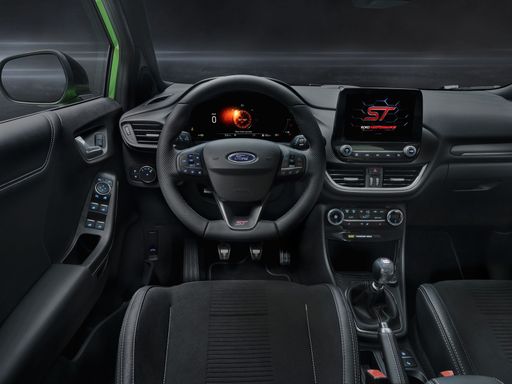 @ Ford Motor Company / Ford Media Center
@ Ford Motor Company / Ford Media Center
Kia Ceed Sportswagon
The Kia Ceed Sportswagon is a versatile estate car that combines practicality with a touch of elegance. It offers a spacious interior, making it ideal for families or those with an active lifestyle. The vehicle's sleek design and advanced features make it a strong contender in the competitive estate car market.
details @ Kia Corporation
@ Kia Corporation
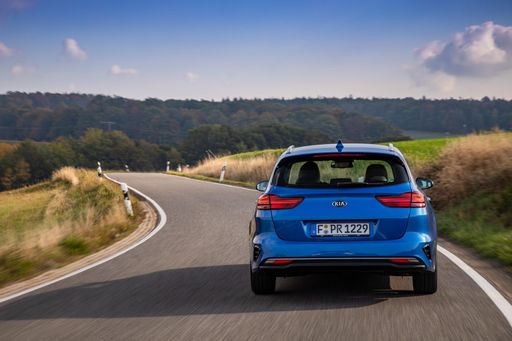 @ Kia Corporation
@ Kia Corporation
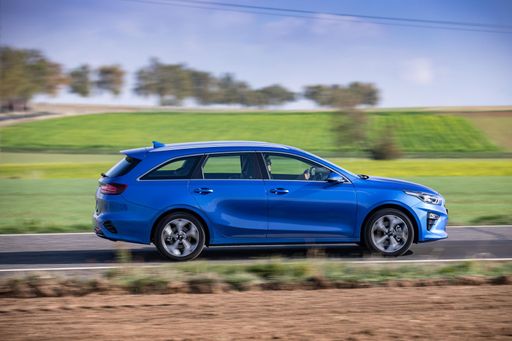 @ Kia Corporation
@ Kia Corporation
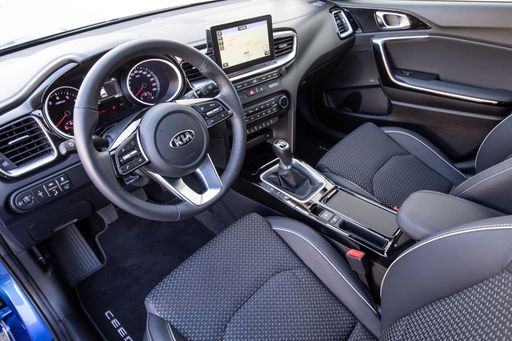 @ Kia Corporation
@ Kia Corporation
 @ Kia Corporation
@ Kia Corporation
 @ Ford Motor Company / Ford Media Center
@ Ford Motor Company / Ford Media Center
|
 @ Kia Corporation
@ Kia Corporation
|
|
|
|
Costs and Consumption |
|
|---|---|
|
Price
24800 - 36300 £
|
Price
24300 - 29100 £
|
|
Consumption L/100km
5.4 - 5.9 L
|
Consumption L/100km
6 - 6.4 L
|
|
Consumption kWh/100km
13.1 - 13.9 kWh
|
Consumption kWh/100km
-
|
|
Electric Range
361 - 376 km
|
Electric Range
-
|
|
Battery Capacity
43 kWh
|
Battery Capacity
-
|
|
co2
0 - 135 g/km
|
co2
137 - 146 g/km
|
|
Fuel tank capacity
42 L
|
Fuel tank capacity
50 L
|
Dimensions and Body |
|
|---|---|
|
Body Type
SUV
|
Body Type
Estate
|
|
Seats
5
|
Seats
5
|
|
Doors
5
|
Doors
5
|
|
Curb weight
1316 - 1563 kg
|
Curb weight
1335 - 1437 kg
|
|
Trunk capacity
456 - 523 L
|
Trunk capacity
512 - 625 L
|
|
Length
4186 - 4226 mm
|
Length
4605 mm
|
|
Width
1805 mm
|
Width
1800 mm
|
|
Height
1550 - 1555 mm
|
Height
1422 - 1465 mm
|
|
Max trunk capacity
1216 - 1283 L
|
Max trunk capacity
1545 - 1694 L
|
|
Payload
367 - 469 kg
|
Payload
455 - 485 kg
|
Engine and Performance |
|
|---|---|
|
Engine Type
Electric, Petrol MHEV
|
Engine Type
Petrol, Petrol MHEV
|
|
Transmission
Automatic, Manuel
|
Transmission
Automatic, Manuel
|
|
Transmission Detail
Reduction Gearbox, Manual Gearbox, Dual-Clutch Automatic
|
Transmission Detail
Dual-Clutch Automatic, Manual Gearbox
|
|
Drive Type
Front-Wheel Drive
|
Drive Type
Front-Wheel Drive
|
|
Power HP
125 - 168 HP
|
Power HP
100 - 140 HP
|
|
Acceleration 0-100km/h
7.4 - 9.8 s
|
Acceleration 0-100km/h
9.7 - 13.5 s
|
|
Max Speed
160 - 210 km/h
|
Max Speed
178 - 197 km/h
|
|
Torque
170 - 290 Nm
|
Torque
172 - 253 Nm
|
|
Number of Cylinders
3
|
Number of Cylinders
3 - 4
|
|
Power kW
92 - 124 kW
|
Power kW
74 - 103 kW
|
|
Engine capacity
999 cm3
|
Engine capacity
998 - 1482 cm3
|
General |
|
|---|---|
|
Model Year
2025
|
Model Year
2024
|
|
CO2 Efficiency Class
A, D
|
CO2 Efficiency Class
E
|
|
Brand
Ford
|
Brand
Kia
|
Is the Ford Puma offered with different drivetrains?
The Ford Puma is offered with Front-Wheel Drive.
The prices and data displayed are estimates based on German list prices and may vary by country. This information is not legally binding.
